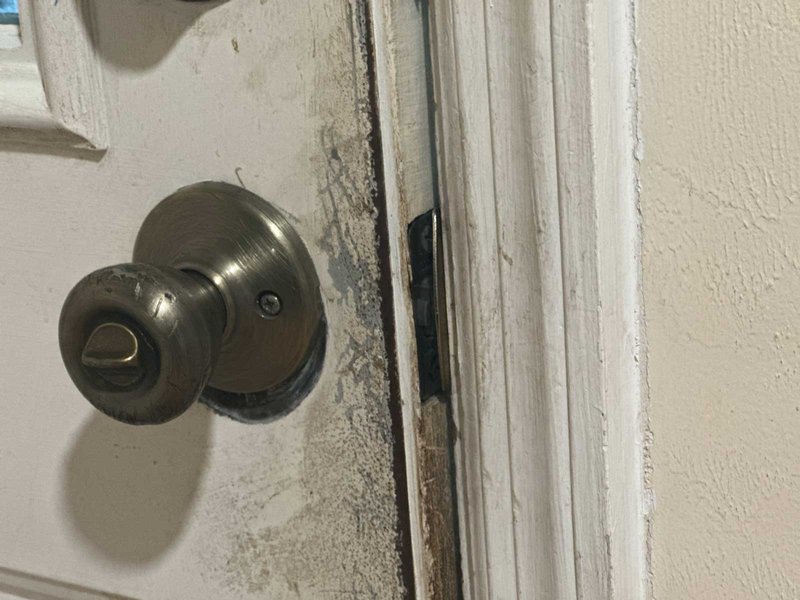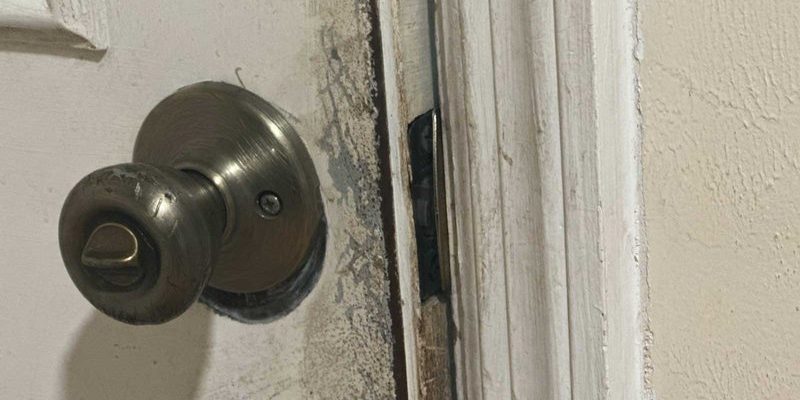
This problem can be as simple as a misalignment or as complex as an internal mechanism failure. You might be dealing with a common household issue, especially if you have recently changed the door hardware, installed a new door, or simply forgotten that changes need to be made to keep things in sync. So, let’s explore the common causes of why your door latch isn’t engaging the strike plate and discover how to troubleshoot this problem together.
Understanding the Door Latch and Strike Plate Mechanism
To tackle the issue effectively, it helps to understand how the door latch and strike plate work together. Think of the door latch as the key player and the strike plate as its partner. When you push the door closed, the latch should slide into the opening on the strike plate, locking the door securely. If they don’t align, you might find yourself wrestling with the door instead of walking through it.
The latch typically consists of a spring-loaded bolt that moves in and out of the door frame. The strike plate is the metal piece installed on the door frame where the latch connects when the door is shut. If the latch doesn’t reach the strike plate correctly, it can’t engage, leaving your door ajar or requiring extra force to close.
Additionally, various factors could alter the alignment needed for this interaction to happen smoothly. Let’s dive deeper into some of those common causes.
Misalignment Between Latch and Strike Plate
One of the most common reasons your door latch isn’t engaging the strike plate is simple misalignment. This can happen for several reasons: perhaps the door has settled into its frame over time, or maybe the hinges have worn out and caused the door to sag.
To check for misalignment, close the door slowly while observing the latch’s positioning relative to the strike plate. If they don’t meet, you may need to adjust the strike plate. Here’s how:
- Loosen the screws holding the strike plate.
- Shift the plate slightly up or down or left or right as needed.
- Tighten the screws back to secure the plate in its new position.
Making these tiny adjustments can often do the trick, allowing the latch to engage smoothly with the strike plate once more. If it’s still not working, we may need to look at other issues.
Worn or Damaged Latch Mechanism
Another issue could be wear and tear on the latch mechanism itself. Just like any moving part in your home, the latch can experience wear over time. If you notice that the latch is sticking, or it doesn’t pull back easily when you try to open the door, it might be time for a replacement.
To check for damage:
- Inspect the latch for any visible signs of wear or rust.
- Test the latch by pushing it in and out. It should move smoothly.
If you identify damage, a quick fix might be to lubricate the latch with a silicone-based lubricant. However, if that doesn’t help, replacing the latch is usually a straightforward job—one that can be done with a screwdriver and a little guidance.
Issues with the Door Frame
Sometimes, the problem isn’t with the latch or the strike plate at all, but rather the door frame itself. If your house has shifted—thanks to settling or renovation—this can cause the door frame to become warped or out of level. A warped door frame can lead to misalignment, causing the latch and strike plate to miss each other entirely.
To check for frame issues:
- Use a level to see if the door frame is straight.
- Look for gaps between the door and the frame—especially at the top and bottom.
If you spot any significant issues, you may need to consult a professional for repairs, as it could involve more extensive work to bring your door frame back into alignment.
External Factors: Weather and Humidity
It might sound surprising, but weather can play a significant role in how your door operates. Humidity can cause wooden doors and frames to swell, making it difficult for the latch to engage. Extreme heat or cold can also change the shape of the door, leading to misalignment.
If you live in a region with fluctuating weather, consider:
- Adjusting your door or strike plate during different seasons.
- Using a dehumidifier in particularly humid conditions to reduce wood swelling.
Sometimes, simply waiting for the weather to stabilize might solve the problem—especially if you notice it’s only an issue during certain times of the year.
Lock Hardware Malfunctions
If your door latch is linked to a locking mechanism, a malfunction there might also be the culprit. Locks can freeze, get stuck, or even break over time, preventing the latch from engaging with the strike plate.
To assess lock functionality:
- Try unlocking the door multiple times to see if the problem persists.
- Inspect the lock cylinder for dirt or debris that may be blocking movement.
You might also be dealing with a damaged or broken lock that needs replacement. If you’re unsure how to proceed, a locksmith can provide professional insight and repair options.
Figuring out why your door latch isn’t engaging the strike plate can feel overwhelming, but breaking it down into these common causes makes it easier to tackle. Whether it’s a simple misalignment, a worn latch, or even something as tricky as a warped frame, most issues can be resolved with a bit of patience and the right approach.
Remember, sometimes it’s a matter of making small adjustments and other times it might need a bit more attention or even professional help. The next time you find yourself wrestling with your door, you’ll know exactly where to look first. Don’t let a stuck door get you down; with a little troubleshooting, you’ll be back to opening and closing with ease in no time!
